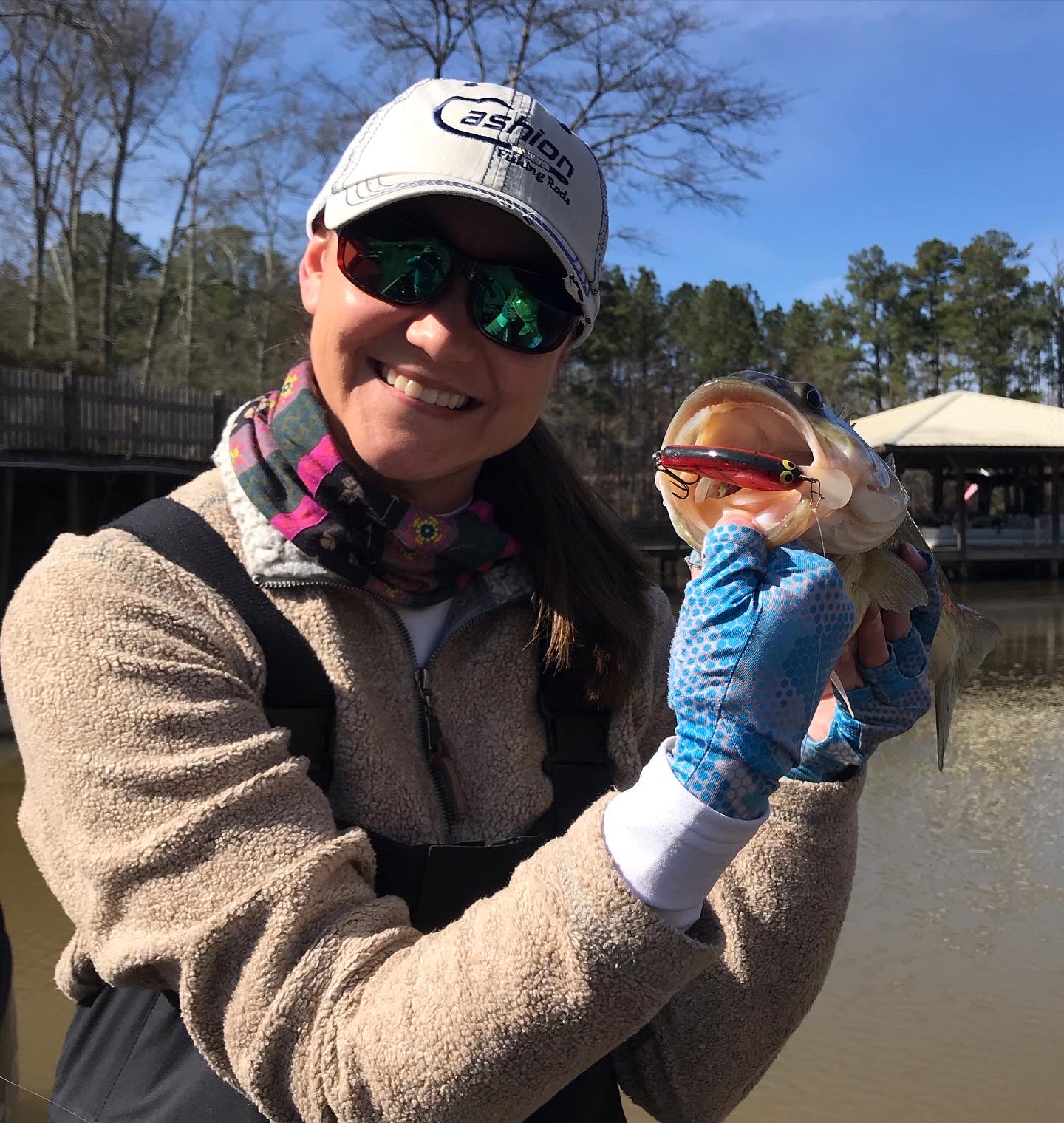Learn tips and tricks to fishing muddy waters from bass angler, Michelle Thomason
Alabama has seen an abundance of rain and flash flooding recently, and our lakes are muddy, but anglers can actually benefit from these muddy conditions if the circumstances are right.
Water temperature is a key factor when faced with muddy conditions in the late Winter and early Spring. The ideal situation is when the water temperature can be increased from a steady 60 degree rainfall. When this occurs, the water temp could rise to 53-55 degrees in the creeks, and these muddy conditions can be the best time to catch bass shallow. Take advantage of the temperature gauge on your electronics while running into a creek, and if the temp is a few degrees warmer in the back, then start beating the bank. After these long downpours, bass will push up to the shallow wood, rocks, and grass in less than 4 feet of water. Especially if it’s sunny, you want to target a rocky bank, because the rocks heat up and further warm the water for those fish. These conditions can create some of the most fun fishing of the year.
The #1 bait to reach for in these muddy conditions is a shallow crankbait. Squarebills or flat-sided crankbaits in orange or red colors can be lights out on these shallow bass. These flat-sided balsa baits may have less thump than a squarebill, but their buoyancy allows them to deflect off of cover, preventing snags and triggering reaction bites. While fishing these crankbaits in that dirty water, cover water quickly and concentrate on lay downs, stumps, and rocky areas where those bass could be feeding.
Spinnerbaits can also be very effective in muddy water, if you choose the right blade. A popular choice is using double Colorado blades with an orange kicker to provide more thump or vibration. You can slow roll this bait, bumping against rock and wood targets, looking for big bites.
Chatterbaits are also a good choice in muddy water, because of the loud vibration. Colors of choice would be orange or red to mimic a crawfish or white and chartreuse to mimic shad. When fishing around grass, use chatterbaits to your advantage by ripping these baits out of the grass to get reaction strikes.
When fishing thicker grass, using a black and blue jig produces big bites from those bass soaking up the heat and hiding under those grass mats. When moving baits can’t be used, jigs are very effective to pitch into laydowns or under docks.
Remember to always use caution if your lake has flooded recently and be aware of possible floating debris. Also, some fisheries adjust quickly to flooded conditions, while others have lasting effects. Because of bends in the river channel, there may be higher water upriver, so be sure to check the lake levels before heading out to the launch.



Leave A Comment